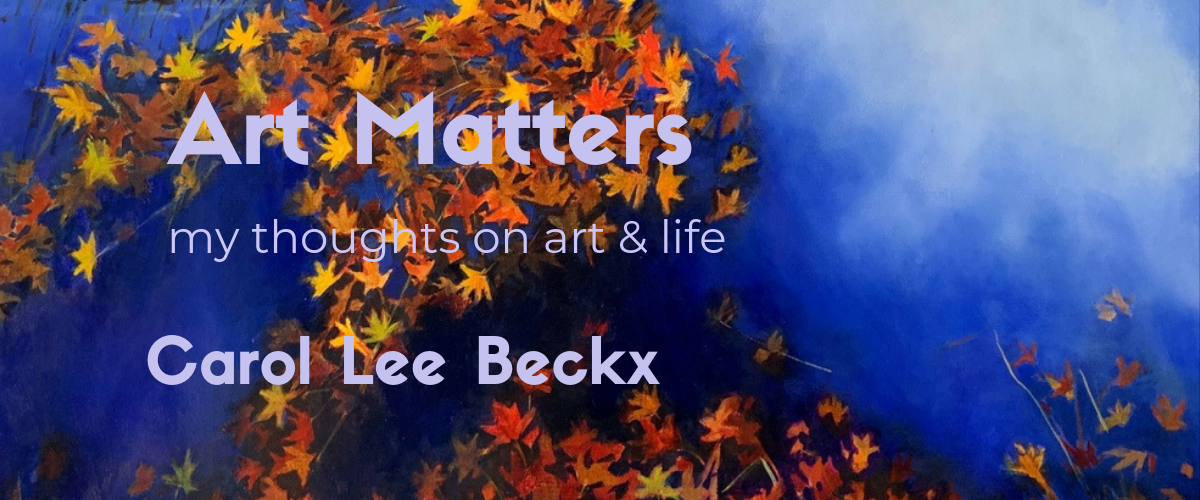What do you do when a painting is behaving badly?
Blame yourself?
Say "I'm no good, I'll never be any good!"
Throw your brushes down and give up?
Keep on adding more and more paint to the canvas regardless?
Here are 5 ways to work your way out of a creative impasse and find your joy once more.
1. Put your brushes down and step away from the easel
2. Look at your painting in a mirror
3. Clean your palette and your brushes
4. Mix some fresh paint.
5. Find something to eliminate or simplify.
1. Put your brushes down - so often we forget that a painting is generally viewed from a few metres away. The viewer seldom is as close as we stand when we paint. If you paint sitting down then it's even more important to get up and move away from the work. And don't just take a single step back, go to the other side of the room. This is usually where the problem areas will be more obvious.
2. Look at your painting in a mirror
I like to do this frequently when painting a portrait. Use a small make-up mirror if you don't have a large one handy.This helps to highlight a feature that is out of kilter.
3. Clean your palette and your brushes
Now I know that there are many artists (very famous ones too) who can work from a palette that is a muddle of paint - old and dried mixed up with fresh paint so you really don't know what's what. Cleaning off the old paint is rather like re-booting your computer, it gives you a fresh start.
4.Mix some fresh paint
So often I will find artists in my studio trying to paint with hardly any paint on their palettes. Tiny mean little bits of paint will result in a mean painting. More generous blobs of paint will result in more luscious brushstrokes. This is especially true if you're painting in acrylics. Larger piles of paint will take longer to dry out so in fact it's less wasteful in the long run.
5. Find something to eliminate or simplify
Now that you have a clean palette and some lovely juicy paint see what you can eliminate from your painting. What is there that doesn't need to be there for the story still to work.
I saw an exhibition recently of beautiful still life paintings. The paintings were lovingly and competently painted. However in almost all of them there were one or two items that I felt were irrelevant to the main story.
I saw an exhibition recently of beautiful still life paintings. The paintings were lovingly and competently painted. However in almost all of them there were one or two items that I felt were irrelevant to the main story.
I'd love to hear if you have some solutions that you'd like to share.







